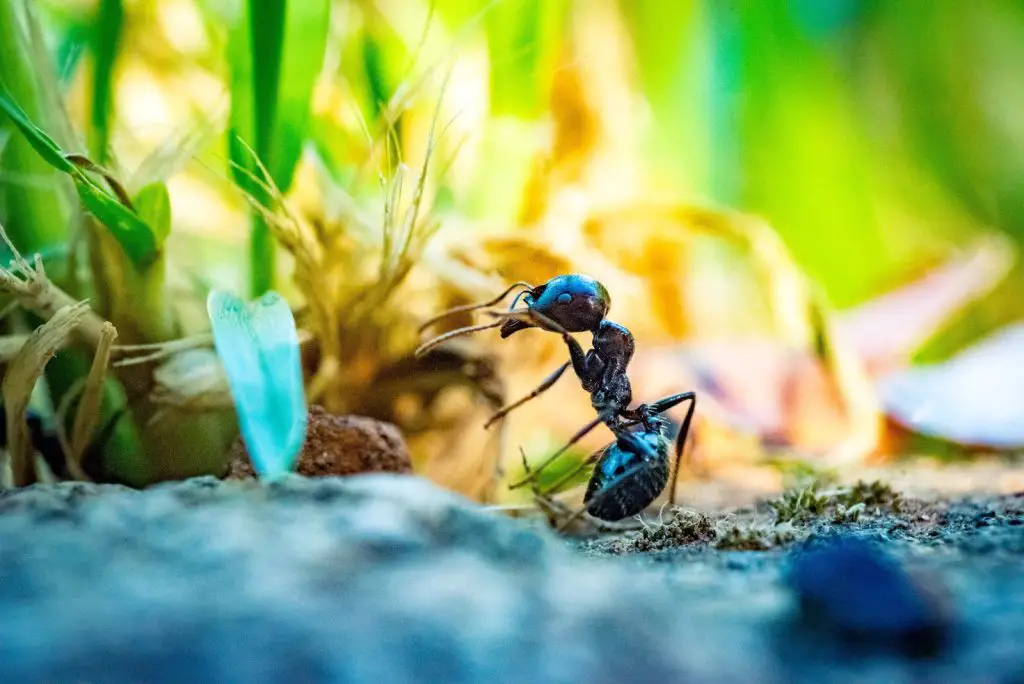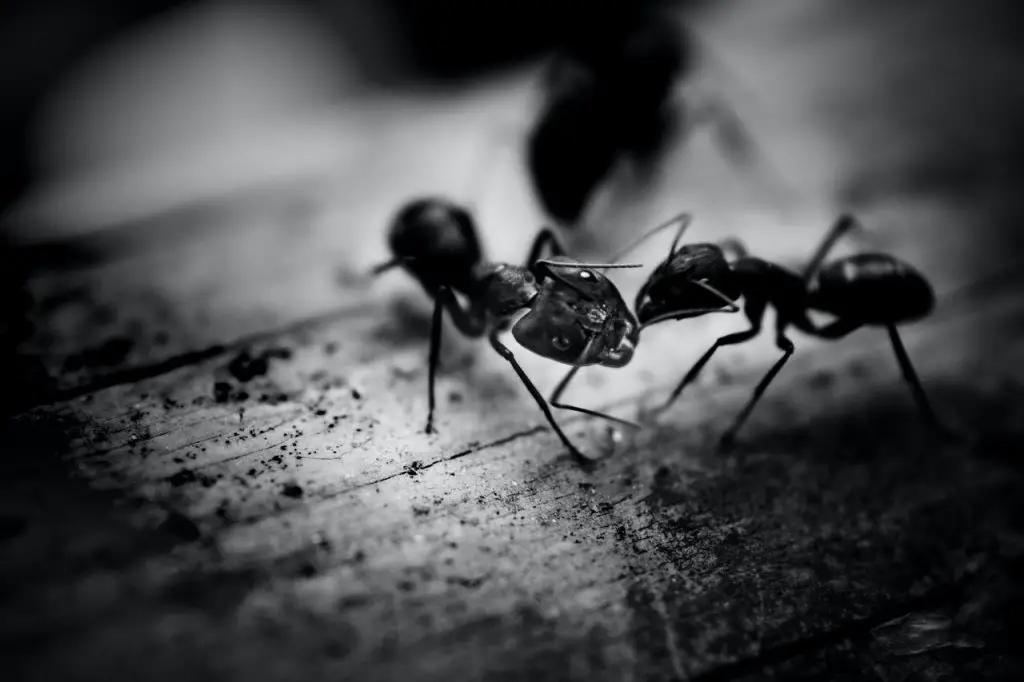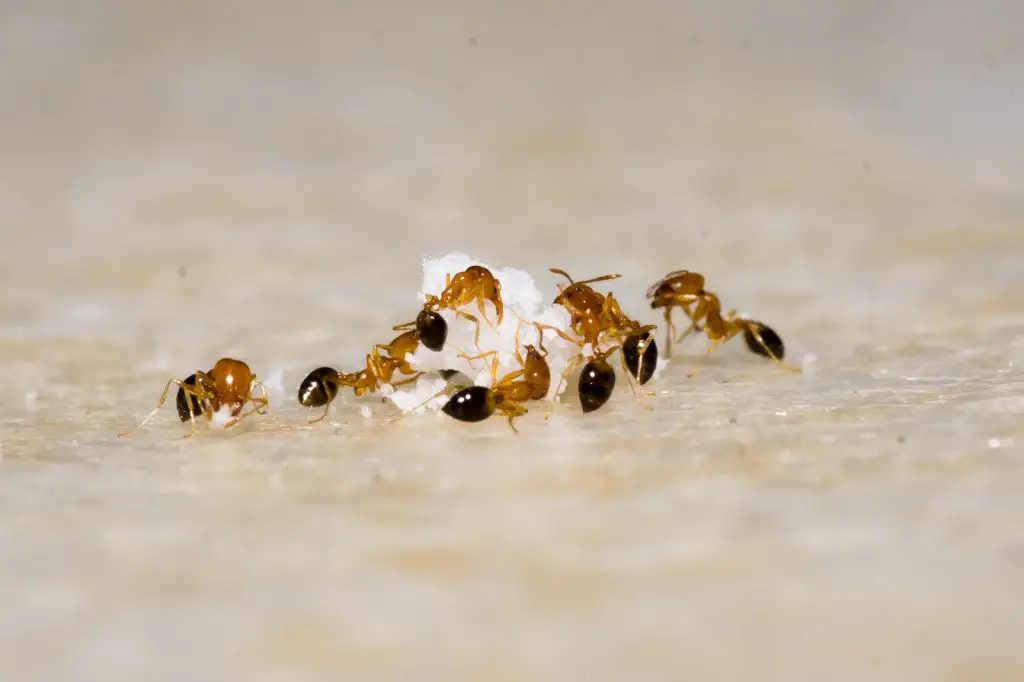Do you ever wonder how ants know where to find food?
Contrary to popular belief, ants cannot detect food odors through plastic as it acts as a barrier that prevents molecules from passing through.
No Ants cannot smell food through plastic. Plastic is an insulator which means that plastics cannot allow molecules to pass through.
Can ants smell food through plastic?
Contrary to popular belief, the answer is no. Ants cannot smell food through plastic.
Ants use their highly sensitive antennae to detect minute traces of chemicals and pheromones in their environment, enabling them to locate food sources and communicate with other ants through their sense of smell.
However, the plastic limits their ability to smell food. Plastic is a non-porous material that does not allow air or odors to pass through easily. This means that ants are not able to smell food through plastic.
While ants may not be able to smell food through plastic, they are still highly resourceful and can find their way into packaging by following visual cues or by detecting the presence of food particles on the outside of the package.
For example, ants can detect the sweet smell of sugary drinks or the crumbs of food on the outside of a bag of chips. They may then follow the trail of food particles into the packaging.
How Ants’ Sense of Smell Is Nothing Short of Amazing
The sensilla on this antenna detect smells and transmit them to the ant
Like other insects, ants have two antennae, which they use as a nose to smell things. They also use their antennae to touch things
Ants wave their antennas around, which are often referred to as feelers. The antennas consist of several individual joints and can be highly mobile.
Anatomy of an ant’s antenna
There are three parts of an antenna :
- Funiculus : An ant’s funiculus, also known as the funiculi or petiole, is a narrow waist-like structure that connects the ant’s thorax and abdomen.
The ant’s mobility and communication with other members of its colony depend on two segments: the post-petiole and the petiole, which make up the funiculus.
- Scape : An ant’s scape, also known as the scape or antennal scape, is a part of its anatomy that refers to the first long segment of its antenna.
The scape is an important structure for ants, as it provides them with a means of detecting and interpreting information about their environment.
- Mandible: An ant uses its mandible, a specialized mouthpart, for various functions such as feeding, defense, and social interactions.
The mandibles, which are situated on each side of the ant’s head, grip, crush, and manipulate food and other objects.
How do ants use their sense of smell
Ants have a remarkably sophisticated sense of smell, allowing them to pick up odors that dictate how they behave and how they interact with each other, a new study says.

Each ant has a subtle, unique aroma, made from a blend of chemicals called pheromones stuck on the outside of its body.
Minute differences in each ant’s body odour provide behavioural cues that allow the insects to maintain complex social colonies with different roles for queens, workers, nurses and soldiers — all without saying a word.
Using exquisitely sensitive antennae instead of noses, they can even sniff out an intruder from another colony.

Why are ants attracted to plastic
Lingering food odors in plastic containers attract ants more than the plastic. Even unopened chips may attract ants with detectable flavors.
When a container is opened, the aroma intensifies, which is why people often see ants near trash cans and recycling bins. These areas tend to contain a lot of food residue, creating a veritable buffet for hungry ants.
Do Ants Eat Through Plastic
Most ants do not have the ability to eat through plastic as it is too tough for their mandibles to penetrate. However, some species of ants, such as the leafcutter ants, can chew through softer types of plastic.
These ants have an impressive ability to cut through tough plant material.And to gnaw through thin plastic films to access food inside. Overall, though, most ants do not pose a significant threat to plastic materials.
Can sugar ants eat through plastic
Well, the answer is yes! These tiny insects are capable of making their way through plastic containers and bags.
The reason behind this is that sugar ants have strong mandibles that can cut through many materials, including plastic.
They use this ability to access food sources that are otherwise unreachable. They can quickly become a nuisance in your home.
To prevent ants from chewing through plastic containers, store food in airtight glass or metal containers.
Conclusion
In conclusion, ants cannot smell food through plastic, as plastic is an insulator and does not allow molecules to pass through. However, ants have a remarkable sense of smell,
which they use to communicate with each other, locate food sources, and recognize members of their colony.
They use their antennae to detect and process odour information, and each ant has a unique aroma made from a blend of chemicals called pheromones stuck on the outside of its body.
Lingering food odours present in many plastic containers attract ants, not the plastic itself. While most ants cannot eat through plastic, some species like leafcutter ants can chew through softer types of plastic to access food inside.



